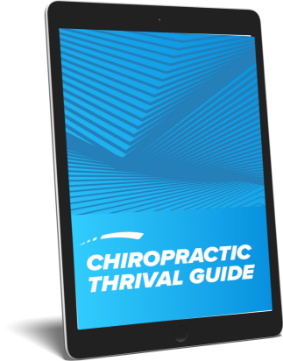By Dr. Christopher Kent
The Chiropractic Advisory Committee of the Veteran’s Administration recently voted for the recommendation of a policy which would make chiropractic available, with few exceptions, by medical referral only. A similar scheme exists in the Department of Defense. The Department of Defense statute does not mention subluxation complex. It is clear that with few exceptions, a medical referral model is used. If chiropractic by medical referral only is characteristic of success, I cannot imagine what you would consider a failure. Note carefully that “neuro” has been stripped from “neuromusculoskeletal.”
According to a newspaper account, quoting Lieutenant Colonel Dr. Robert Manaker “Several of the sites employ a ‘patient choice’ model, which gives patients the option of seeing a traditional provider or chiropractor directly for musculoskeletal complaints. However, most sites still utilize a referral system, in which the medical doctor makes an initial diagnosis and then refers the patient to a chiropractor for additional care.” [1]
A search of medical school curricula failed to disclose any U.S. medical school that provides training in chiropractic analysis for vertebral subluxation. Similarly, such training does not appear to be part of the residency programs completed by primary care physicians, or other persons providing primary medical care.
Even in the realm of musculoskeletal medicine, absent subluxation issues, a recent study in the Journal of Bone and Joint Surgery concluded: “Current medical school training in musculoskeletal medicine is inadequate.” [2]
The average score of the 85 residents tested was 59.6% (73% was considered passing). The highest score was 86%, the lowest 35%. Only 19 residents earned a passing grade while 70 (82%) “failed to demonstrate basic competency.”
The authors concluded: “The current study clearly documents the inadequacy of medical school education with regard to musculoskeletal medicine. The duration of the residents’ preparation in this area was inadequate. For the study population as a whole, the mean duration of instruction in orthopaedics was only 2.1 weeks. In addition, 28 residents (33%) had graduated from medical school with no rotation, required or elective, in orthopedic surgery; these residents had the lowest mean score (55.9%) on the examination and the highest rate of failure (93%). Given the absence of training in determining the safety and appropriateness of chiropractic care by primary care providers, protocols should be designed that permit direct access to chiropractic providers.”
A primary medical care provider, with few exceptions, lacks the education, training, and experience to determine indications and contraindications to chiropractic care.
It is important to note that chiropractic adjusting procedures are not limited to highvelocity, lowamplitude thrust (HVLA) procedures. Reflex, lowforce, and tonal techniques are also available, many of which may be safely applied in circumstances where HVLA techniques may be inappropriate.
Primary care physician and nonphysician primary care providers are generally not familiar with these procedures, and could become barriers to the provision of chiropractic care. The notion that veterans, with very few exceptions, will have to be referred by a Primary Care Physician or other person treating the patient, is likely the most devastating and outrageous notion I have encountered in my 30 years as a chiropractor. By statute, custom, and policy, patients in all 50 states have direct access to doctors of chiropractic.
D.D. Palmer and countless other chiropractic pioneers went to jail to secure the right of patients to obtain access to chiropractic care. The men and women who serve, and who have served in the Armed Forces deserve freedom of choice in health care.
References
1. Freedman KB, Bernstein J. “The adequacy of medical school education in musculoskeletal medicine.” J Bone and Joint Surg, 80A:14211427. Oct. 1998.
2. www.chiroweb.com/archives/21/02/02.html (DoD)

























































































































































